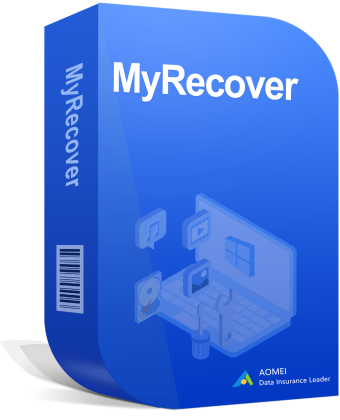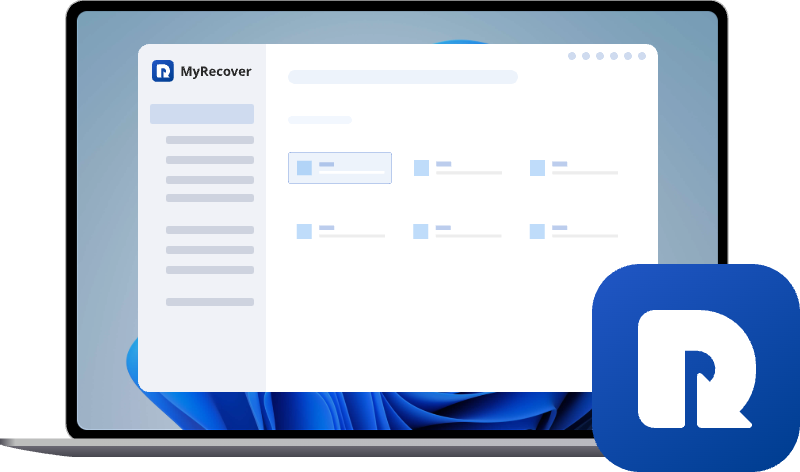Backup and Restore Windows 10 Not Working: Solutions and Alternative
If Windows 10 Backup and Restore isn’t working, you risk losing important files. This guide explains why backup failures occur and provides practical solutions to fix the issue. From checking system settings to using alternative tools, you’ll learn how to reliably back up and restore your data without hassle.
About Backup and Restore(Windows 7) Tool
Backup and Restore is a built-in Windows tool, originally introduced in Windows 7, designed to help users back up files and system data to prevent data loss. Despite its "Windows 7"name, it is still available in Windows 10 and Windows 11.
Key Features:
🏷️File Backup: Back up specific folders or entire libraries.
🏷️System Image Backup: Create a full system image to restore Windows to a previous state.
🏷️Restore Function: Recover files or the entire system from a backup.
🏷️Scheduled Backups: Set automatic backups to regularly protect important data.
In brief, this tool is imple to use, built into Windows, and suitable for basic backup and restoring deleted files without using any software.
Backup and Restore Windows 10 Not Working-Why?
Sometimes, users find that the Backup and Restore (Windows 7) tool in Windows 10 stops working or fails to complete backups. This can prevent important files or system images from being properly saved.
Common reasons include:
- 💡System Updates: Recent Windows updates may interfere with the tool’s functionality.
- 💡Corrupted Backup Files: Existing backup files may be damaged or incomplete, causing errors.
- 💡Insufficient Disk Space: Low storage space on the backup or system drive can interrupt or stop the backup process midway.
- 💡Third-Party Software Conflicts: Antivirus or other backup programs may block the tool.
- 💡Volume Shadow Copy Issues: Problems with Windows’snapshot service can disrupt backups.
- 💡Disk Errors: Bad sectors or file system errors on the drive may prevent successful backups.
- 💡Misconfigured Backup Settings: Incorrect paths or options can lead to failures.
Solutions to Backup and Restore (Windows 7) Not Working in Windows 10
In the previous section, we identified the potential causes, which can help you troubleshoot the issue and restore Backup and Restore functionality, ensuring your data remains safely backed up. Now, let’s move on to the corresponding solutions.
1: Roll Back the Problematic Update
If Backup and Restore stops working after a recent Windows update, it’s likely that the update interfered with the tool’s functionality. To resolve this:
Check for Known Issues: Visit the Windows Update History page to see if your update has known backup issues.
Install Pending Updates: Microsoft may release patches to fix update-related problems. Go to "Settings → Update & Security → Windows Update and check for updates".
Rollback the Problematic Update: If the backup tool worked before a recent update, consider uninstalling the update.
Go to "Settings → Update & Security → Windows Update → View update history→ Uninstall updates".
From the list, select update you want to remove, and then select "Uninstall".
After updates or rollback, restart your computer to ensure all changes take effect.
2: Delete Corrupted Backup Files
If Backup and Restore does not working or fails due to corrupted or incomplete backup files, the tool may not be able to read or restore your data.
Locate Existing Backup Files: Check where your previous backups are stored, usually in Control Panel → System and Security → Backup and Restore (Windows 7) → Manage space → View backups.
Delete Corrupted Backups: If a backup is incomplete or damaged, select it and choose "Delete" to remove the corrupted file.
After removing corrupted files, create a fresh backup:go to Control Panel → System and Security → Backup and Restore (Windows 7).Click "Set up backup" and follow the wizard to select a storage location and files to back up.
3: Check Destination Drive Space
If your system or backup drive runs out of storage, Windows Backup and Restore may not work when it comes tocreatingor completingbackups.
Check Available Disk Space: Open File Explorer → right-click the backup drive → select "Properties". Review the available Free Space.
If the space is not enough to hold any new backups, you can delete old backups (refer to the method 2), or use alarger drive instead for backups.
4: Rule Out Third-party Software Conflits
If Windows Backup and Restore is not working because of interference from antivirus software or third-party backup tools, you can try the following fixes to resolve the issue:
Temporarily Disable Antivirus Software: Some antivirus programs may block system operations. Turn off real-time protection temporarily and check if the backup works.
Go to "Settings → Privacy & Security → Windows Security → Virus & threat protection → Manage settings", then toggle off "Real-time protection".
Remember to re-enable it after testing.
Uninstall Conflicting Backup Programs: If you use other third-party backup software, they may override Windows Backup services. Uninstall or disable them temporarily to test functionality.
Run Windows in Clean Boot Mode: This helps identify conflicts by starting Windows with minimal services and startup programs: Type "msconfig"in the search box → open "System Configuration"→ under "Services", check "Hide all Microsoft services"→ click "Disable all"→ restart your PC.
5: Restart the Volume Shadow Copy Service
When Windows Backup and Restore not working is caused by Volume Shadow Copy Service (VSS) errors, the backup process may fail to create system snapshots properly. Restarting the service can often fix the issue and restore normal backup operations.
Step 1. Press "Win + R", type "services.msc", and press "Enter".
Step 2. Locate Volume Shadow Copy in the list. Right-click it and select "Properties".
Step 3. Set Startup type to "Automatic (Delayed Start)".
Step 4. Click "Start", then "Apply"and "OK" to save changes.
If the "backup and restore Windows 10 not working" issue persists, you can try to re-register VSS Components:
Open Command Prompt as administrator. Type the following commands one by one and press Enter after each:
- net stop vss
- net start vss
- vssadmin list writers
Check if the writers show No error. If errors persist, you may need to re-register VSS DLL files:
Stop VSS and related services:
- net stop vss
- net stop swprv
Re-register the VSS DLL Files:
- regsvr32 /s ole32.dll
- regsvr32 /s oleaut32.dll
- regsvr32 /s vss_ps.dll
- regsvr32 /s msxml.dll
- regsvr32 /s msxml3.dll
- regsvr32 /s msxml4.dll
- regsvr32 /s msxml6.dll
- regsvr32 /s swprv.dll
- regsvr32 /s eventcls.dll
- regsvr32 /s es.dll
- regsvr32 /s stdprov.dll
- regsvr32 /s vssui.dll
- regsvr32 /s msxml.dll
Restart VSS services:
- net start swprv
- net start vss
6: Check and Fix Disk Error
Disk errors or corruption can prevent Windows Backup and Restore from working properly, as the tool may fail to read or write data. Running a disk check can detect and repair these issues, restoring backup functionality.
Step 1. Press "Win + S", type "cmd", right-click "Command Prompt", and select "Run as administrator".
Step 2. Type the command and press Enter: chkdsk X: /f /r (Replace X: with the drive letter of the disk you want to check.)
- Note:✎...
- /f fixes errors on the disk,
- /r locates bad sectors and recovers readable information.
- use this command carefully, since sometime the CHKDSK might delete files.
After CHKDSK completes, run Backup and Restore again to verify that backups can proceed without errors.
7: Reconfigure Backup Setting
If Windows Backup and Restore is not working due to incorrect backup paths, missing folders, or wrong options, correcting the settings can resolve the problem.
Go to "Control Panel → System and Security → Backup and Restore (Windows 7)".
Review Backup Location: click "Change settings": Ensure the backup is pointing to a valid drive with enough space. Avoid network drives with unstable connections.
Check What to Back Up: verify the selected folders, libraries, and system image options. If necessary, select "Let me choose"and manually include important folders.
Run a manual backup to confirm the corrected settings allow the process to complete successfully.
Alternative Way: Restore Personal Files More Easily
If Windows Backup and Restore is not working or you don’t have a recent backup, you can still recover your important files using MyRecover—a reliable data recovery tool that doesn’t require a prior backup.

- Recover Without Backup: Restore lost files even if no Windows backup exists.
- High Success Rate: AI-powered file recognition and recovery algorithms ensure easy use and zero file omission.
- Wide File Support (1000+): Recover photos, documents, videos, audio, archives, and more.
- Supports Multiple Devices (500+): Works on HDDs, SSDs, USB drives, SD cards, cameras, and other storage devices.
- Covers 500+ Data Loss Scenarios: Handles accidental deletion, formatting, system crashes, virus attacks, emptied Recycle Bin, partition loss, and more.
1. Download and install MyRecover.Launchitand select the drive where files were lost.
2. Click "Scan"to let MyRecover find all recoverable files.
3. Preview and select the files you need, then click "Recover" to save them to a safe location.
With MyRecover, you can quickly regain access to your personal files even when Windows Backup and Restorefails or is unavailable.
Wrap Up
Windows Backup and Restore (Windows 7) is a useful built-in tool for protecting your files and system, but it can sometimes fail due to various reasons. By following the troubleshooting steps above, you can often restore its functionality and ensure your data remains safe.
However, if the "Backup and Restore Windows 10 not working" issue still bothers you or you don’t have a recent backup, you can turn to other backup tools like Windows File History, or prepare a professional data recovery like MyRecover, which can help recover your important files quickly and safely without prior backups.


